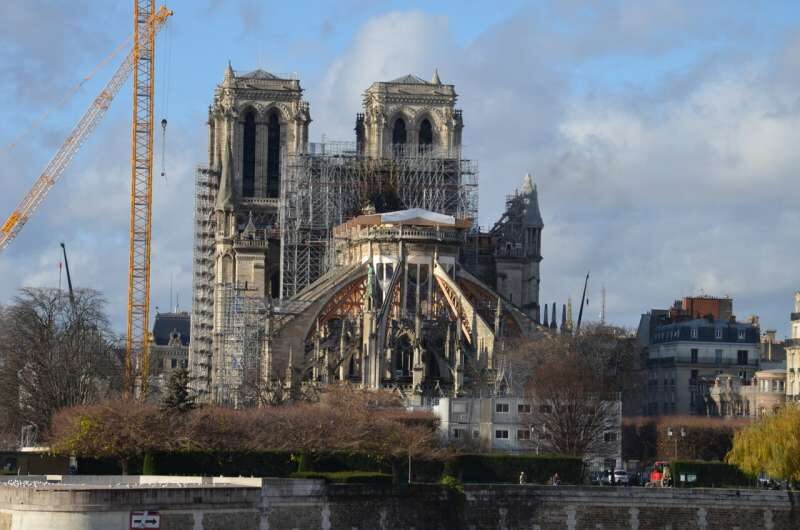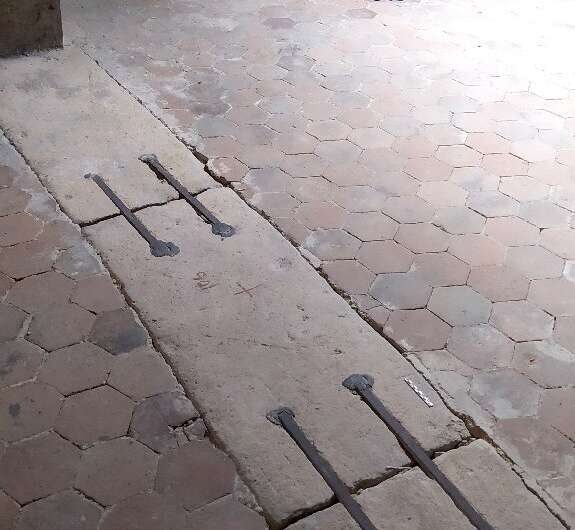
At the time of its construction in the mid-12th century, Notre-Dame was the tallest building ever erected, reaching a height of 32 meters.
Previous research suggests that this record was made possible by combining a number of architectural innovations. However, despite extensive use of iron reinforcements in more recent cathedrals and in efforts to restore old buildings, it has been unclear what role iron might have played in Notre-Dame's initial construction.
Now, the 2019 fire and subsequent restoration have allowed L'Héritier and colleagues to access previously concealed parts of Notre-Dame that hold clues to the possible use of iron in its construction. The researchers obtained samples of material from 12 iron staples used to bind stones together in different parts of the building, including the tribunes, nave aisles, and upper walls. They applied radiocarbon dating as well as microscopic, chemical, and architectural analyses to better understand the staples.
These analyses suggest that iron staples were indeed used in the earliest phases of construction of Notre-Dame in the 1160s, making it the first building of its type to have relied on iron staples throughout its structure.

The researchers note that further analyses of Notre-Dame samples and a comprehensive database of historical iron producers in the region are needed to confirm and expand on their novel findings regarding the medieval Parisian iron market.
The authors add, "Radiocarbon dating reveals that Notre-Dame de Paris is indisputably the first Gothic cathedral where iron was thought of as a real building material to create a new form of architecture. The medieval builders used several thousand of iron staples throughout its construction."
More information: Maxime L'Héritier et al, Notre-Dame de Paris: The first iron lady? Archaeometallurgical study and dating of the Parisian cathedral iron reinforcements, PLoS ONE (2023). DOI: 10.1371/journal.pone.0280945
Journal information: PLoS ONE



Comment: See also: